
Guide
How to clean your coffee machine
by Raphael Knecht

Your vacuum cleaner wages war on dust. But what happens when it starts flagging and can’t do what it’s supposed to anymore? With these tricks and the right cleaning products, you’ll have your cleaning appliance spick and span in no time.
In summer, it’s a good idea to air your home well in the morning and evening to get rid of stale home office air and let in a fresh breeze. But even if you do this, microparticles like dust and pollen will still find their way into your house. The best way to combat this is with a powerful vacuum cleaner that destroys them as quickly as possible. That’s all well and good but what happens if all of a sudden the appliance doesn’t vacuum up as much or with the same power you’re used to. Or, dare I say it, in the worst-case scenario: what if it gives up the ghost altogether? At that stage, you can’t put off looking after and cleaning your vacuum any longer. By maintaining it regularly in future, you ensure the vacuum will be around for a long time to do all the dirty work for you.
A pair of scissors or some other kind of sharp blade helps you to cut out and remove hair or other things that have got wrapped around the brush roll or tangled in the bristles. And using a compressed air spray lets you blow dust and dirt out of hard-to-reach places. An old toothbrush can help you to get things like filters or dust containers and even the furthermost corners clean. Pipe cleaners – or similar tools – can remove stubborn deposits from places you can’t reach by hand. A damp cleaning cloth helps to get dusty surfaces and containers clean again. You’ll also often need a torch to help you see grimy nooks and crannies better. If you have a dust allergy, I also recommend wearing a mask as well as gloves while you’re cleaning.
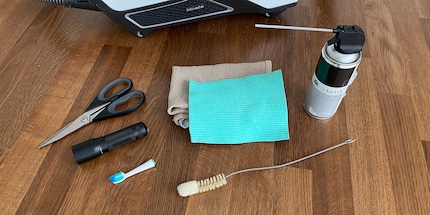
Find yourself a suitable place outside with enough room for you to work while staying dry – if something like that is possible or available. A standard clean that you’d do every three to four months shouldn’t take you any longer than 30 minutes. But do bear in mind that when you wash a filter in water, for instance, it takes 24 hours to dry. If you’re dealing with stubborn dirt or deposits that might even require you to unscrew the vacuum or take it apart, you’ll need to factor in an extra hour or two. What’s key is that every vacuum cleaner needs to be serviced every so often, whether it’s a wireless or bagless model or not. It’s standard and can’t be avoided. By the time the suction power reduces or the vacuum switches itself off, you’ll know it’s time to clean it.

Once you’ve found a place, like a balcony, terrace or garage with an open door, and gathered together all the cleaning tools you’ll need, start by emptying the dust container. Or the bag, depending on the vacuum cleaner model. Once that’s done, use the compressed air spray to blow more dirt out of the vacuum that’s settled there and didn’t dislodge when you emptied it. It’s a good idea to empty the bag or container too often rather than not often enough. The less dust there is in it, the stronger the suction power will be. If compressed air doesn’t cut it, tackle stubborn deposits with a pipe cleaner or toothbrush. Finish up by wiping everything down with a damp cloth to remove any residual dust particles and any other residue. For safety reasons, let each part that you’ve cleaned with water or a damp cloth dry for 24 hours. The filter in particular needs to be completely dry before you put it back in the vacuum cleaner. That’s because damp filters are less permeable than dry ones. And in the worst-case scenario, it could cause damage beyond repair.
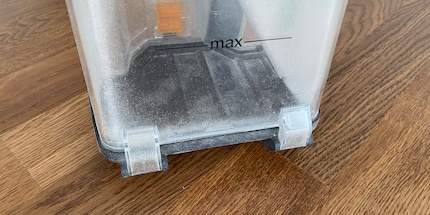
Sooner or later, even high-quality filters get full to the brim with dust and end up clogged. But that’s actually the way it’s meant to be, because what it’s supposed to do is filter dust from the air. In this process, the vacuum loses suction power. Depending on the model, it can take up to two years before the vacuum gives way completely. But you’ll notice the performance decreasing in a matter of weeks if you don’t clean the filter regularly. In addition, your vacuum manual will specify how often you should replace the filter. While cleaning does help combat reduced suction power, you’ll get to a point where you just can’t get all the dust out of the filter. What’s more, cleaning the filter with water can wear it away.
Normally, you can hold off a bit before changing the filter, as manufacturers err on the side of caution and tend to recommend an earlier change date than required. While cordless vacuum cleaners – such as all of the Dyson range – only have one filter, some corded models feature at least two filters. Your manual will tell you how many filters your vacuum cleaner has. It also details whether you can put the filter under running water to clean it or if it can’t be reused. For instance, if the 24-hour drying time puts you off removing the dust with water, a second vacuum or a compressed air spray can be helpful.
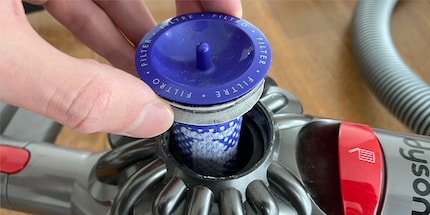
Imagine this. You’ve cleaned or changed the filters, cleaned the containers, and the vacuum cleaner still isn’t doing what it’s supposed to. It may well be that at some point you vacuumed up something up that’s too big to find its way into the bag or dust container. In corded vacuums, these things usually get stuck in kinks of the tube or in the area between the suction tube and the container. You might find loose scraps of paper, pens or garden waste, but damp clumps of dust or animal fur are also contenders for blocking your vacuum. When it comes to stick vacuum cleaners, obstructions usually occur where the shaft meets the dust container. Taking the vacuum apart, including the tube and brush head, lets you unblock any clogged areas and better reach nooks and crannies – just as long as you can do this without screws. A torch or flashlight helps you see down the dark tube, while a pipe cleaner or a long, thin object can help to detach anything that’s jammed and remove it from the vacuum. For tackling smaller deposits, compressed air spray is usually enough to get the job done.
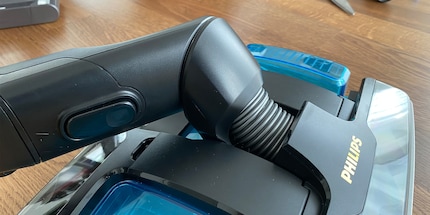
Has your vacuum cleaner got a roll in the brush at the front? In that case, this is where you’ll want to direct your attention. When one or more creatures in your home have long hair, it’s highly likely that most of these hairs regularly find themselves getting wrapped around your vacuum cleaner. Very few actually end up in the vacuum bag or container. Dental floss, fabric fibres and grass can also get caught in the roll. A brush roll that’s got loads of things wrapped around it doesn’t work as well, especially not on carpets. It can even get to the stage where the roll doesn’t turn anymore. This can cause the vacuum belt to rip and make the vacuum brush break. When it comes to robot vacuum cleaners, this is a common problem with the wheels.
The easiest way to solve it is to use a pair of scissors or other blade to cut out the hair and fibres that have got wrapped around and then pull them out by hand. Just make sure when you’re cutting that you avoid giving the bristles a trim as much as possible. With some vacuum cleaners, you can actually remove the brush roll without needing to take the whole vacuum apart. This makes it considerably easier to remove things like hair. With this set-up, it’s also easier to spot if other objects have got caught in or on the roll or brush attachment.
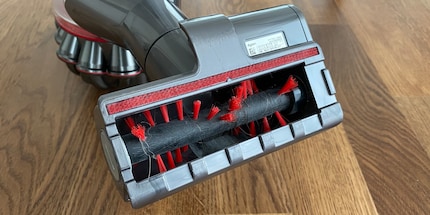
Normally, the steps above will get your vacuum cleaner back up and running and give it as long a life as possible. But if all these tips and tricks still don’t have the desired result, there are a few more things you can try before you need to splash out on a new vacuum. In terms of cordless and robot vacuum cleaners, it could be the case that the battery is dead. Alternatively, a build-up of dust or other dirt on the charging station or battery itself could be blocking the connection, thereby making it impossible to charge up the vacuum. When it comes to robot vacuum cleaners, poor vacuuming results are often down to a dirty dust sensor. You can find out exactly where this is in the vacuum manual. Usually, all you need to do is give the sensor a wipe with a damp cloth. In terms of corded and stick vacuum cleaners, a tear in the tube can reduce the vacuum’s performance. Even what’s known as a phantom filter blockage can affect suction power. This is where a fine powder – such as flour or dust from plastering, which you can barely see with the naked eye – makes air suction impossible. In this case, it helps to put the filter under running water to clean it. And if you’re still at a loss and none of these tips help, you can make a warranty claim or seek expert advice.
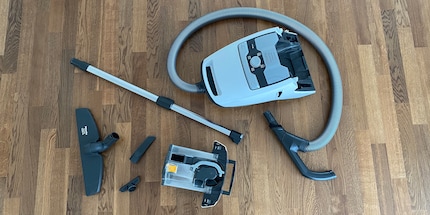
When I'm not stuffing my face with sweets, you'll catch me running around in the gym hall. I’m a passionate floorball player and coach. On rainy days, I tinker with my homebuilt PCs, robots or other gadgets. Music is always my trusted companion. I also enjoy tackling hilly terrain on my road bike and criss-crossing the country on my cross-country skis.
Practical solutions for everyday problems with technology, household hacks and much more.
Show all